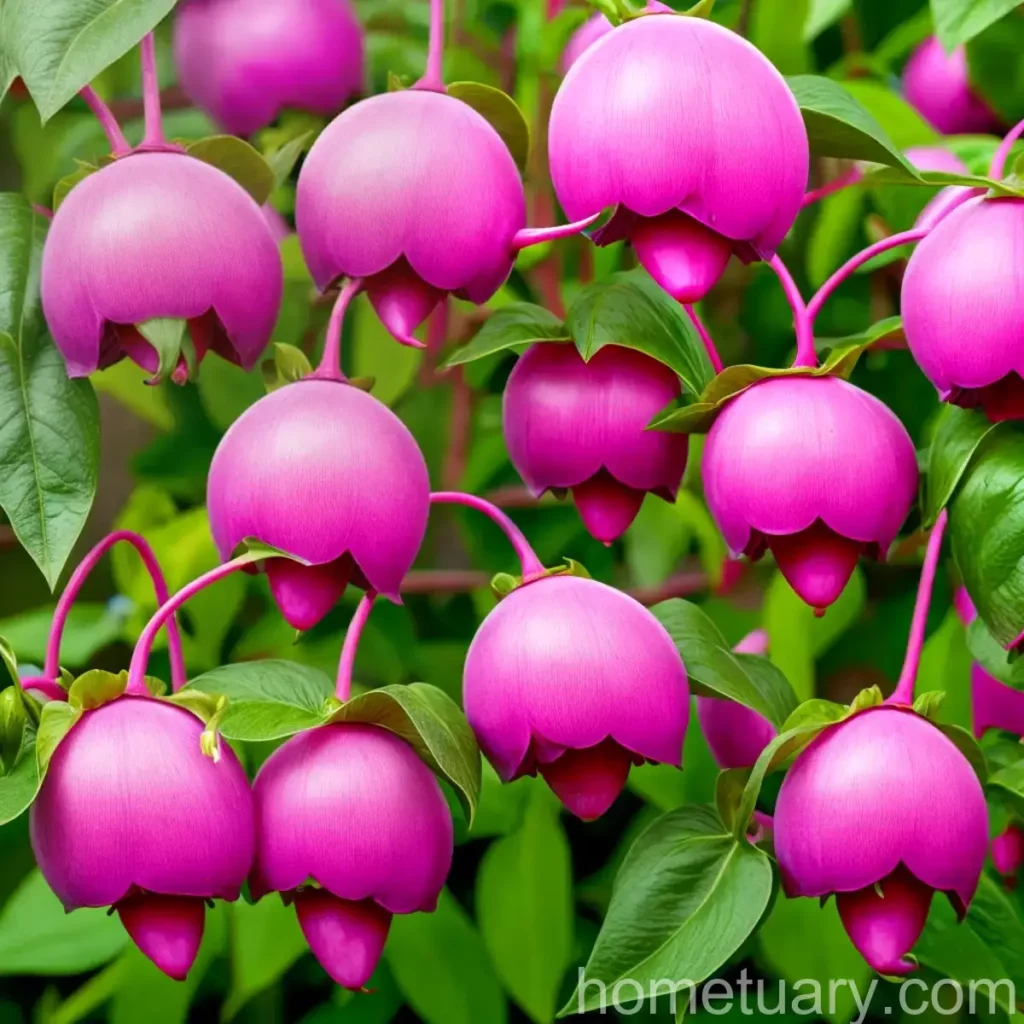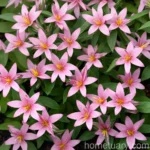Lady’s Eardrops (Fuchsia ‘Gartenmeister’): An In-depth Guide
What is Lady’s Eardrops (Fuchsia ‘Gartenmeister’)?
Fuchsia ‘Gartenmeister’, commonly known as Lady’s Eardrops, is a delightfully charming flowering plant that belongs to the Fuchsia genus. This particular variety is cherished for its stunning pendulous blooms and is a popular choice among gardeners and plant enthusiasts.
The Lady’s Eardrops plant is native to Central and South America, where it thrives in the cool, moist climates of the Andes Mountains. It has gained widespread popularity for its elegant appearance, vibrant colors, and versatility in various garden settings.
Key Takeaways – Lady’s Eardrops (Fuchsia ‘Gartenmeister’)
Before we delve into the comprehensive care guide for Lady’s Eardrops, here are the key takeaways for quick reference:
- Plant Name: Lady’s Eardrops (Fuchsia ‘Gartenmeister’)
- Common Names: Fuchsia ‘Gartenmeister’, Fuchsia Flower
- Cultural Uses: Ornamental, Attracts Pollinators
- Water: Regular watering, Soil Moisture Control
- Sunlight: Partial Shade to Full Sunlight
- Fertilizer: Balanced, Water-Soluble Fertilizer
- Soil: Well-Draining, Humus-rich
- Pruning: Regular Pruning for Shape and Size Maintenance
- Propagation: Softwood Cuttings, Division
- Container Popularity: Suitable for Container Gardening
- Common Diseases: Phytophthora Root Rot, Botrytis Blight
- Common Pests: Aphids, Spider Mites
- Botanist’s Tips: Maintain Adequate Moisture, Provide Partial Shade in Warmer Climates
- Fun Facts: Attracts Hummingbirds, Symbolizes Elegance and Grace
With these key points in mind, let’s explore the intricate details of caring for and nurturing the exquisite Lady’s Eardrops plant.
Culture
The cultural requirements of Lady’s Eardrops revolve around creating an environment that mimics its natural habitat, providing the necessary conditions for robust growth and abundant flowering.
Uses
The Lady’s Eardrops plant holds significant ornamental value, adding a touch of elegance and vibrancy to gardens, balconies, and indoor spaces. Its pendulous blooms are known to attract various pollinators, including hummingbirds and butterflies, contributing to the ecological diversity of the garden.
Water
Proper watering is vital for the health and vigor of Lady’s Eardrops. Maintaining consistent soil moisture without overwatering is crucial. During the growing season, regular watering is necessary, ensuring that the soil does not dry out completely between waterings. In hot and dry climates, additional care should be taken to prevent the soil from becoming parched.
Sunlight
Lady’s Eardrops thrives in a partially shaded to sunny environment. While it appreciates bright, indirect light, it should be shielded from intense midday sun in warmer regions. Providing filtered sunlight or dappled shade can ensure the plant’s optimal growth and flowering.
Fertilizer
For robust growth and prolific blooming, fertilizing Lady’s Eardrops with a balanced, water-soluble fertilizer is essential. During the growing season, a regular feeding schedule, typically every 2-4 weeks, can significantly enhance the plant’s vitality and flowering performance.
Soil
The ideal soil for Lady’s Eardrops is well-draining and rich in organic matter. A humus-rich potting mix or garden soil can provide the necessary nutrients and aeration for the plant’s root system. Additionally, maintaining slightly acidic to neutral pH levels in the soil is beneficial for overall growth and development.
Pruning
Regular pruning is integral to maintaining the desired shape and size of Lady’s Eardrops. It also encourages new growth and enhances flowering. Deadheading spent blooms and trimming leggy or overcrowded branches promotes a compact and bushy growth habit.
Propagation
Lady’s Eardrops can be propagated through softwood cuttings taken during the active growing season. These cuttings, when properly prepared and placed in a suitable growing medium, can readily develop into new plants. Division is another method of propagation that can be employed to increase the plant population.
Container Popularity
Due to its elegant appearance and compact growth habit, Lady’s Eardrops is well-suited for container gardening. Its pendulous blooms cascade beautifully from hanging baskets or containers, adding a graceful touch to patios, balconies, and indoor spaces. When growing in containers, ensuring proper drainage and moisture retention is crucial for the plant’s well-being.
Common Diseases and Pests
As with any plant, Lady’s Eardrops is susceptible to certain diseases and pests that can affect its health and vitality. Understanding these potential threats is essential for maintaining a robust and thriving plant.
Common Diseases
Phytophthora Root Rot: This fungal disease can pose a risk to Lady’s Eardrops, especially in poorly drained or waterlogged soil. Symptoms include wilting, yellowing leaves, and stunted growth. Adequate soil drainage and moisture management are key preventive measures.
Botrytis Blight: Also known as gray mold, botrytis blight can affect the foliage, stems, and flowers of Lady’s Eardrops, causing a fuzzy gray mold and rapid deterioration of affected parts. Good air circulation and avoiding overhead watering can help prevent this disease.
Disease Diagnosis
Early detection of diseases in Lady’s Eardrops is crucial for implementing prompt and effective remedial measures. Regular monitoring of the plant’s overall health and symptoms such as wilting, discoloration, or abnormal growth can aid in timely intervention.
Common Pests
Aphids: These small, sap-sucking insects can infest Lady’s Eardrops, causing distorted growth and honeydew secretion. Natural predators or insecticidal soaps can be employed to control aphid populations.
Spider Mites: Known for spinning fine webs and causing stippling on leaves, spider mites can adversely affect the health of Lady’s Eardrops. Regularly spraying the foliage with water and applying horticultural oils can help manage spider mite infestations.
Botanist’s Tips
Harnessing the expertise of botanists and experienced gardeners can provide valuable insights and recommendations for cultivating Lady’s Eardrops with finesse and precision. Here are some tips to consider:
-
Maintain Adequate Moisture: Consistent soil moisture is essential for Lady’s Eardrops, especially during the active growing season. However, it is crucial to prevent waterlogged conditions, which can lead to root rot and other complications.
-
Provide Partial Shade in Warmer Climates: When cultivating Lady’s Eardrops in regions with intense sunlight and high temperatures, offering partial shade can shield the plant from excessive heat stress, preserving its health and vigor.
Fun Facts
In addition to its captivating beauty and ornamental value, Lady’s Eardrops is associated with several intriguing and noteworthy facts:
-
Lady’s Eardrops are known to attract hummingbirds with their vibrant blooms, adding a touch of natural allure to gardens and outdoor spaces.
-
Symbolizing elegance and grace, the pendulous flowers of Lady’s Eardrops exhibit a charming and captivating allure, making it a delightful addition to any garden or landscape.
With its fascinating attributes and cultural significance, Lady’s Eardrops (Fuchsia ‘Gartenmeister’) stands as a cherished botanical treasure that enriches the horticultural realm with its allure and charm.
Links to External Resources
For additional information and resources on Lady’s Eardrops, the following links can provide valuable insights and guidance:
- Royal Horticultural Society – Fuchsia ‘Gartenmeister’
- The American Fuchsia Society
- Gardening Know How – Growing Fuchsia Gartenmeister
- University of Florida IFAS Extension – Fuchsia Production Guide
Delving into the information provided by these reputable sources can offer comprehensive insights into the cultivation, care, and appreciation of Lady’s Eardrops, aiding enthusiasts and horticulturalists in their quest for botanical knowledge and proficiency.















